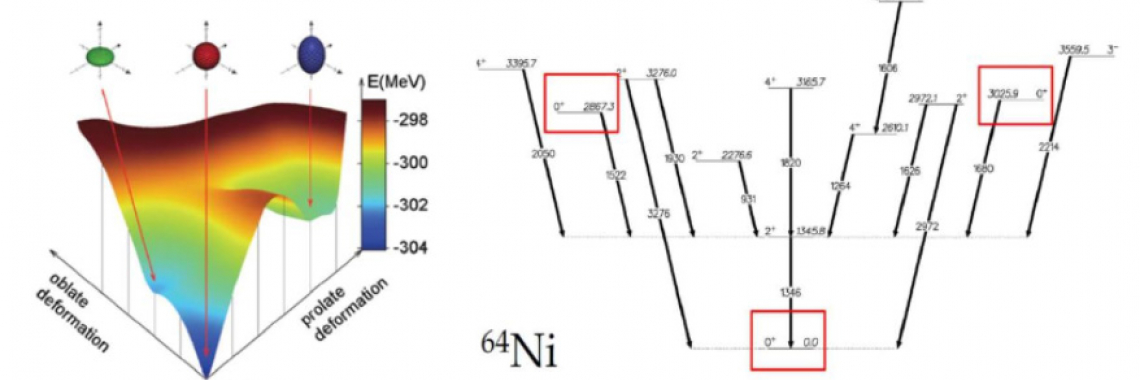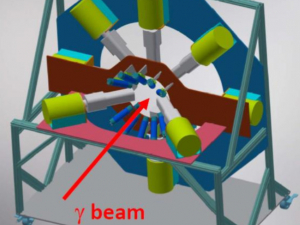Projects
Gamma-Ray Spectroscopy for nuclear structure, nuclear astrophysics and fundamental symmetries
This project uses gamma-ray spectroscopy techniques to determine the properties of specific nuclear states and to document their impact on nuclear structure, nucleosynthesis and fundamental interactions. The challenge is to (1) understand how shell structure evolves with proton and neutron number in stable nuclei as well as on the proton-and neutron-rich sides of the valley of nuclear stability and to (2) quantify the impact of this shell evolution on global nuclear properties such as the shape, the binding energy, and radioactivity. The work is carried with HIys,TUNL’s tandem, as well as with the national user facilities, ATLAS at Argonne National Laboratory and the National Superconducting Cyclotron Laboratory at Michigan State University. Recent work has focused on shape coexistence in the 64-70Ni isotopic chain with a focus on testing models predicting the presence of 3 distinct nuclear shapes (see picture) and on establishing the deformation of 76Ge as this impacts estimates of the decay rate for neutrinoless double beta decay.
The Project Team: TUNL Faculty: Robert Janssens, Art Champagne, Christian Iliadis
Development of the Clover Array at HIyS
In order to extend the capabilities of the gamma-ray detection for Nuclear Resonance Fluorescence (NRF) measurements at HIγS, the Clover Array is under development. The core of this system is a suite of eight germanium clover detectors that will considerably improve the ability to carry out the high-resolution γγ coincidence measurements at the facility. The clover detectors are part of the clovershare consortium established by the US nuclear science community in order to optimize the usage of these y-ray spectrometers in dedicated campaigns at a number of accelerator facilities. This new experimental arrangement at HIγS (see figure) will also accommodate other ancillary detector systems, including an array of twelve 2” x 2” CeBr3 and 3” x 3” LaBr3:Ce scintillators. The latter detectors will improve coincidence timing capabilities in the sub-nanosecond range. The array has applications in nuclear structure and astrophysics as well as in application of nuclear science.
The Project Team: TUNL Faculty: Robert Janssens, Art Champagne, Christian Iliadis


